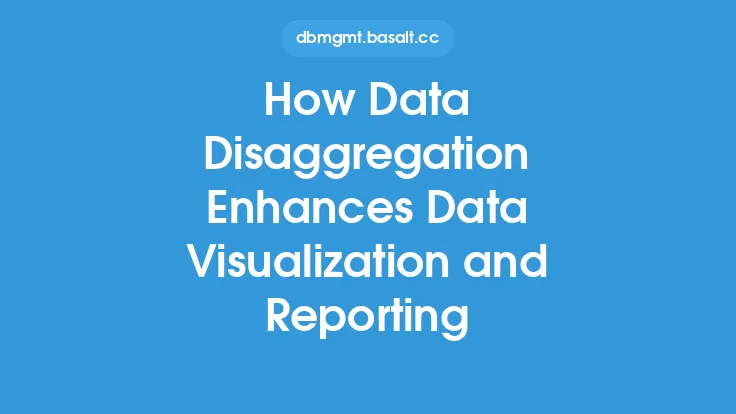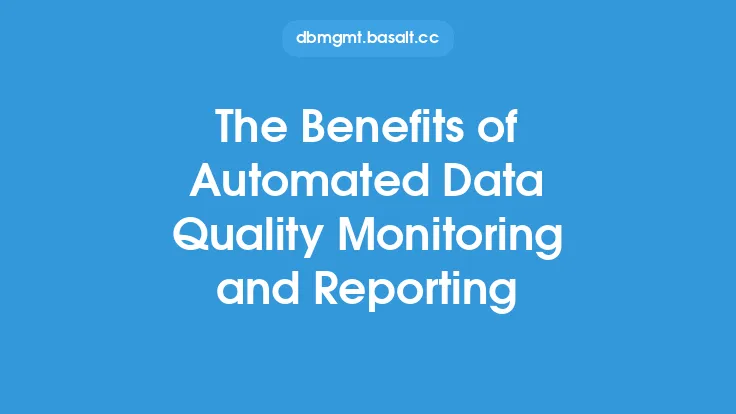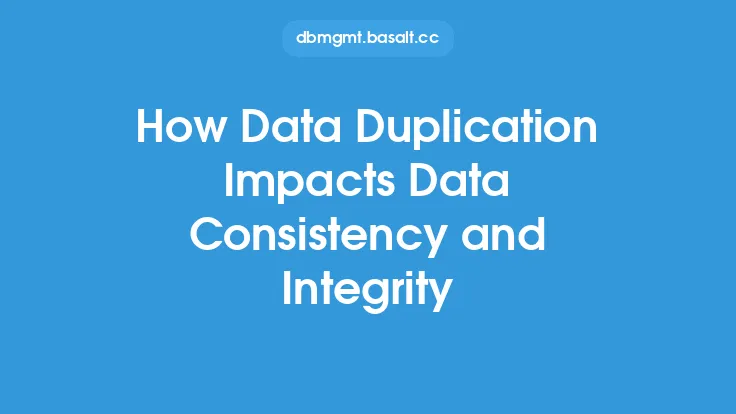Proper data formatting is a crucial step in the data analysis and reporting process. It involves organizing and structuring data in a way that makes it easily accessible, readable, and understandable. When data is properly formatted, it can be easily analyzed, and insights can be quickly gleaned, enabling businesses and organizations to make informed decisions. In this article, we will explore the importance of proper data formatting and how it enhances data analysis and reporting.
Introduction to Data Formatting
Data formatting refers to the process of organizing and structuring data into a standardized format. This involves cleaning, transforming, and formatting data to ensure that it is consistent, accurate, and reliable. Proper data formatting is essential for effective data analysis and reporting, as it enables data to be easily searched, sorted, and analyzed. When data is properly formatted, it can be easily imported into various software applications, such as spreadsheet programs, statistical analysis tools, and data visualization software.
Benefits of Proper Data Formatting
Proper data formatting offers several benefits, including improved data quality, increased efficiency, and enhanced decision-making. When data is properly formatted, it is easier to identify errors, inconsistencies, and missing values. This enables data analysts to clean and preprocess data more efficiently, reducing the risk of errors and inaccuracies. Proper data formatting also enables data to be easily shared and collaborated on, facilitating teamwork and communication among stakeholders. Furthermore, properly formatted data can be easily analyzed and visualized, enabling businesses and organizations to gain insights and make informed decisions.
Data Formatting Techniques
There are several data formatting techniques that can be used to enhance data analysis and reporting. These include data normalization, data transformation, and data aggregation. Data normalization involves scaling numeric data to a common range, usually between 0 and 1, to prevent differences in scales from affecting analysis. Data transformation involves converting data from one format to another, such as converting categorical data into numeric data. Data aggregation involves combining multiple data values into a single value, such as calculating the mean or sum of a set of values.
Data Formatting Tools and Software
There are several data formatting tools and software applications available that can help with data formatting. These include spreadsheet programs, such as Microsoft Excel, statistical analysis tools, such as R and Python, and data visualization software, such as Tableau and Power BI. These tools and software applications offer a range of features and functions that can help with data formatting, including data cleaning, data transformation, and data visualization. They also offer advanced analytics and machine learning capabilities, enabling data analysts to gain deeper insights and make more informed decisions.
Best Practices for Data Formatting
To ensure that data is properly formatted, there are several best practices that should be followed. These include using standardized formatting conventions, such as using consistent date and time formats, and using data validation rules to prevent errors and inconsistencies. Data analysts should also use data profiling techniques to identify errors and inconsistencies in data, and use data quality metrics to measure the accuracy and reliability of data. Furthermore, data analysts should document their data formatting processes and procedures, enabling others to understand and replicate their work.
Common Data Formatting Challenges
Despite the importance of proper data formatting, there are several challenges that data analysts may face. These include dealing with missing or incomplete data, handling data from multiple sources, and ensuring data consistency and accuracy. Data analysts may also face challenges in terms of data scalability, as large datasets can be difficult to format and analyze. To overcome these challenges, data analysts should use advanced data formatting techniques, such as data imputation and data interpolation, and use data quality metrics to measure the accuracy and reliability of data.
Conclusion
Proper data formatting is a critical step in the data analysis and reporting process. It involves organizing and structuring data in a way that makes it easily accessible, readable, and understandable. By using proper data formatting techniques, tools, and software applications, data analysts can improve data quality, increase efficiency, and enhance decision-making. By following best practices for data formatting, data analysts can ensure that data is accurate, reliable, and consistent, enabling businesses and organizations to make informed decisions and drive success.





